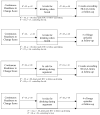Readiness to change and risk drinking women
- PMID: 21193283
- PMCID: PMC3072060
- DOI: 10.1016/j.jsat.2010.11.004
Readiness to change and risk drinking women
Abstract
The predictive value of the Readiness to Change Questionnaire (RTCQ) for subsequent drinking was evaluated in 499 women. These women had medical problems potentially exacerbated by alcohol use and were enrolled in an intervention study. Correlates and predictors of stage of change were analyzed. Results indicated that the categorical application of the RTCQ did not predict drinking in the 6-12 months after enrollment. Preliminary findings support rescoring the RTCQ into a continuous measure. Following this conversion, situational risks factors for drinking were examined as potential mediators of readiness to change (RTC). Heightened risk for alcohol consumption during argument or boredom was found to attenuate the association between one's RTC and later drinking. Finally, medical condition moderated the association of RTC on later drinking; women with diabetes, infertility, or osteoporosis drank the most in the contemplation stage. In contrast, hypertensive women drank more when action oriented to change. The implications for treating risk drinking in women are discussed.
Copyright © 2011 Elsevier Inc. All rights reserved.
Figures



References
-
- Allen JP, Columbus M. NIAAA treatment handbook series 4. Bethesda, MD: U. S. Department of Health and Human Services, Public Health Service, National Institutes of Health, National Institute on Alcohol Abuse and Alcoholism; 1995. Assessing alcohol problems: A guide for clinicians and researchers. NIH publication no. 95–3745.
-
- Ajzen I. From intentions to actions: A theory of planned behavior. In: Kuhl J, Beckman J, editors. Action-control: From cognition to behavior. Heidelberg: Springer; 1985. pp. 11–39.
-
- Baraona E, Abittan CS, Dohmen K, Moretti M, Pozzato G, Chayes ZW, Schaefer C, Lieber CS. Gender differences in pharmacokinetics of alcohol. Alcoholism: Clinical and Experimental Research. 2001;25:502–507. - PubMed
-
- Baron RM, Kenny DA. The moderator-mediator variable distinction in social psychological research: conceptual, strategic, and statistical considerations. Journal of Perssonality and Social Psychology. 1986;51:1173–1182. - PubMed
Publication types
MeSH terms
Grants and funding
LinkOut - more resources
Full Text Sources
Medical

